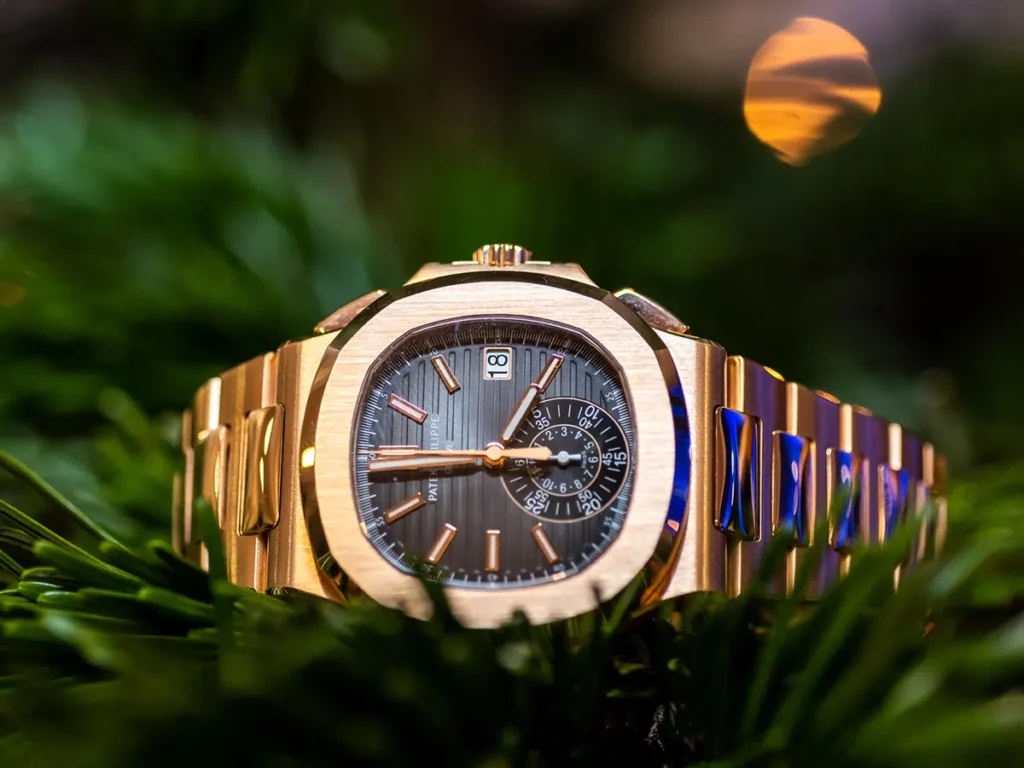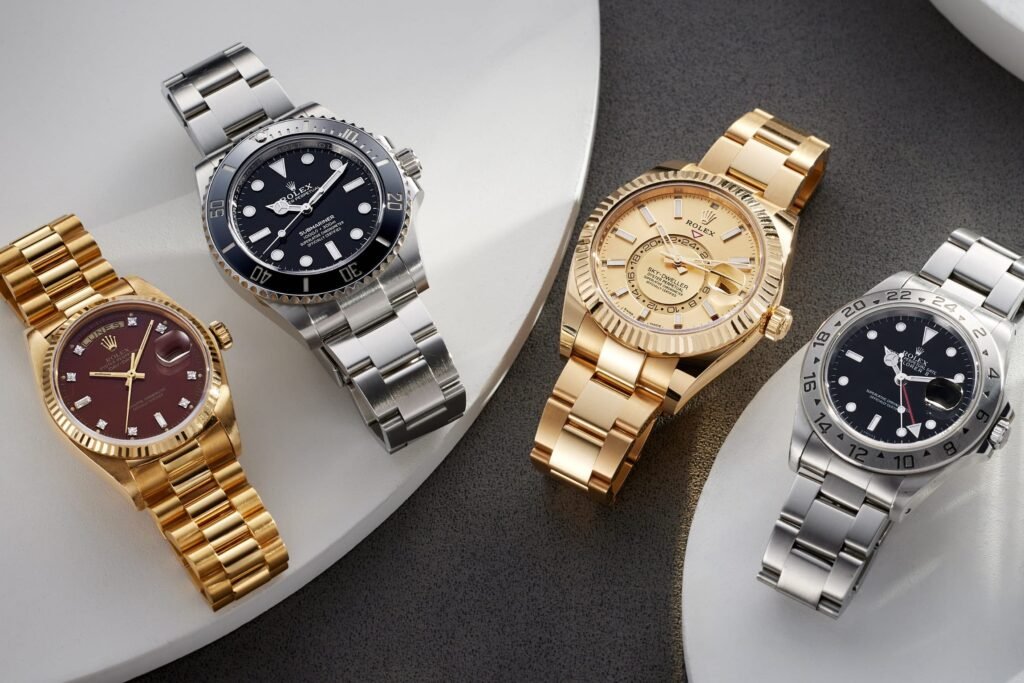In a world increasingly reliant on smartphones and smartwatches, the timeless elegance of a finely crafted luxury watch continues to captivate collectors, connoisseurs, and casual wearers alike. These masterpieces are more than just tools to tell time—they are enduring symbols of status, precision engineering, and personal legacy.

Whether you’re considering your first luxury timepiece or planning to expand your collection, navigating the world of haute horology can feel daunting. With hundreds of brands, models, movements, and complications available, how do you choose the perfect luxury watch?
This detailed guide will walk you through every step—helping you make an informed and confident decision that suits your lifestyle, reflects your taste, and potentially grows in value over time.
What Makes a Watch “Luxury”?
A luxury watch stands out for reasons far beyond its price tag. Here’s what defines true luxury:
- Craftsmanship: Artisanal attention to detail, often with hundreds of components hand-assembled.
- Materials: Use of high-quality materials like sapphire crystal, platinum, rose gold, and titanium.
- Mechanical Excellence: Complex, often manually or automatically wound movements that showcase innovation and tradition.
- Brand Heritage: Iconic watchmakers with decades or centuries of expertise.
- Exclusivity: Limited editions, unique complications, and models that are hard to find.
- Legacy Value: Certain pieces become collectibles, appreciating in price over time.
💡 A luxury watch isn’t just an accessory—it’s a story on your wrist.
Step 1: Define Your Purpose and Style
Ask Yourself These Key Questions:
- Why are you buying a watch?
- Daily wear, professional use, sports, investment, heirloom, etc.
- What’s your aesthetic preference?
- Bold or subtle? Sporty or elegant? Vintage or modern?
- Where will you wear it?
- Office, outdoors, diving trips, business travel, or red carpet events?
Watch Categories to Consider:
| Category | Description |
|---|---|
| Dress Watch | Elegant, thin profile, often on leather—ideal for formal settings. |
| Dive Watch | Rugged, water-resistant (200m+), luminous dials—perfect for aquatic use. |
| Pilot Watch | Big dial, easy to read, multiple time zones—great for travelers. |
| Chronograph | Stopwatch function, sporty—ideal for racers and adventurers. |
| GMT Watch | Tracks two or more time zones—useful for frequent flyers. |
| Field Watch | Durable, legible, usually with fabric straps—military-inspired. |
| Complication | Multiple features like perpetual calendar, moonphase, tourbillon. |
| Luxury Smartwatch | Blends tradition with digital tools—e.g., TAG Heuer Connected. |
Step 2: Set a Realistic Budget
Suggested Price Tiers:
| Budget (USD) | What to Expect | Suggested Brands |
|---|---|---|
| $1,000 – $3,000 | Entry-level Swiss watches | Tissot, Hamilton, Oris, Longines |
| $3,000 – $10,000 | Premium automatic watches, complications | Omega, Tudor, Breitling, TAG Heuer |
| $10,000 – $50,000 | High-end, investment-grade watches | Rolex, IWC, Jaeger-LeCoultre, Zenith |
| $50,000+ | Haute horlogerie, collectibles | Patek Philippe, AP, Vacheron Constantin |
🧠 Don’t forget to account for maintenance costs—luxury doesn’t end at the checkout.
Step 3: Understanding Watch Movements
The movement is the heart of a watch—what powers it and keeps it ticking.
🔧 1. Mechanical (Manual-Wind)
- No battery; requires winding.
- Loved for tradition and engineering.
- Often visible through sapphire casebacks.
Brands to Explore: A. Lange & Söhne, Patek Philippe.
🔁 2. Automatic (Self-Winding)
- Wound by wrist motion.
- Perfect for daily wear.
- Keeps running if worn regularly.
Popular Picks: Rolex Submariner, Omega Seamaster.
🔋 3. Quartz
- Battery-powered and highly accurate.
- Less expensive, minimal maintenance.
Brands with Luxury Quartz Options: Cartier, Grand Seiko, Longines.
Step 4: Material Matters – Cases, Crystals, and Straps
🧱 Watch Case Materials
- Stainless Steel: Durable and versatile. Rolex’s Oystersteel is a benchmark.
- Gold (Yellow, Rose, White): Classic luxury. Heavy and elegant.
- Platinum: Rare, hypoallergenic, very dense.
- Titanium: Lightweight and strong. Great for sports models.
- Ceramic: Scratch-resistant and modern. Used by Hublot and Omega.
- Carbon Fiber: Ultra-light and high-tech look.
🔍 Crystal Types
- Sapphire Crystal: Highly scratch-resistant. Preferred in all luxury watches.
- Mineral Glass: Less expensive, not as durable.
🪢 Strap and Bracelet Types
- Leather (Calf, Alligator): Formal and classic.
- Metal (Stainless, Gold, Titanium): Versatile and durable.
- Rubber: Ideal for sports and dive watches.
- NATO/Fabric: Casual and comfortable.
Step 5: Complications – More Than Timekeeping
“Complications” are functions beyond basic time display. The more you have, the more complex (and costly) the watch.
Common Complications:
| Complication | Function |
|---|---|
| Date/Day Display | Shows date or day+date |
| Chronograph | Stopwatch function |
| GMT | Tracks two or more time zones |
| Moonphase | Shows lunar cycle |
| Annual Calendar | Auto-adjusts for 30/31 days |
| Perpetual Calendar | Doesn’t require correction until 2100 |
| Tourbillon | Rotating cage to increase accuracy |
| Minute Repeater | Chimes time on demand |
Step 6: Learn the Brands – Legacy on Your Wrist
The “Holy Trinity” of Watches:
- Patek Philippe – Known for timeless designs and investment value.
- Audemars Piguet – Creator of the legendary Royal Oak.
- Vacheron Constantin – Oldest Swiss watchmaker, founded in 1755.
Other Icons:
- Rolex – Resale king. Durable and desirable.
- Omega – Moonwatch fame. Precision meets style.
- Cartier – Elegance in jewelry and watch design.
- IWC – Pilot and engineer’s timepieces.
- Jaeger-LeCoultre – Innovation and mechanical complexity.
- Grand Seiko – Japanese craftsmanship at its finest.
Step 7: Where to Buy Your Luxury Watch
🛍️ Authorized Dealers
- Safe, authentic, full warranty.
- Often found in luxury malls or brand boutiques.
💼 Reputable Online Retailers
🔍 Auction Houses
- Great for rare and vintage timepieces.
- Try Sotheby’s, Christie’s, or Phillips.
⚠️ Avoid unknown sellers, especially without paperwork or verified listings.
Step 8: Maintenance & Service
Luxury watches need care like any precision instrument.
Servicing Tips:
- Every 3–5 years for mechanical watches.
- Only go to authorized service centers.
- Store in a watch box or winder.
- Clean with a soft cloth; use mild soap for metal bracelets.
Step 9: Watches as Investments
Certain watches don’t just retain value—they grow.
Top Investment Picks:
- Rolex Daytona/Submariner
- Patek Philippe Nautilus
- Audemars Piguet Royal Oak
- Omega Speedmaster LE
🧾 Factors That Impact Value:
- Brand recognition.
- Scarcity or discontinued models.
- Condition, box, and papers.
- Auction sales and hype cycles.
Step 10: Ethical & Sustainable Watchmaking
Modern buyers expect more. Watch for brands that prioritize:
- Sustainable materials (e.g., recycled steel, lab-grown diamonds).
- Ethical sourcing (e.g., conflict-free metals).
- Eco-conscious practices (e.g., solar movements).
Conclusion: Choose a Timepiece That Reflects You
Buying a luxury watch is more than a transaction—it’s a personal milestone. Whether you’re drawn to the elegance of a Jaeger-LeCoultre Reverso or the rugged legacy of a Rolex Submariner, your perfect timepiece awaits.
Take your time. Try different styles. Research, compare, and most importantly—choose the watch that speaks to you.
Remember: A luxury watch doesn’t just tell time—it tells your story.



